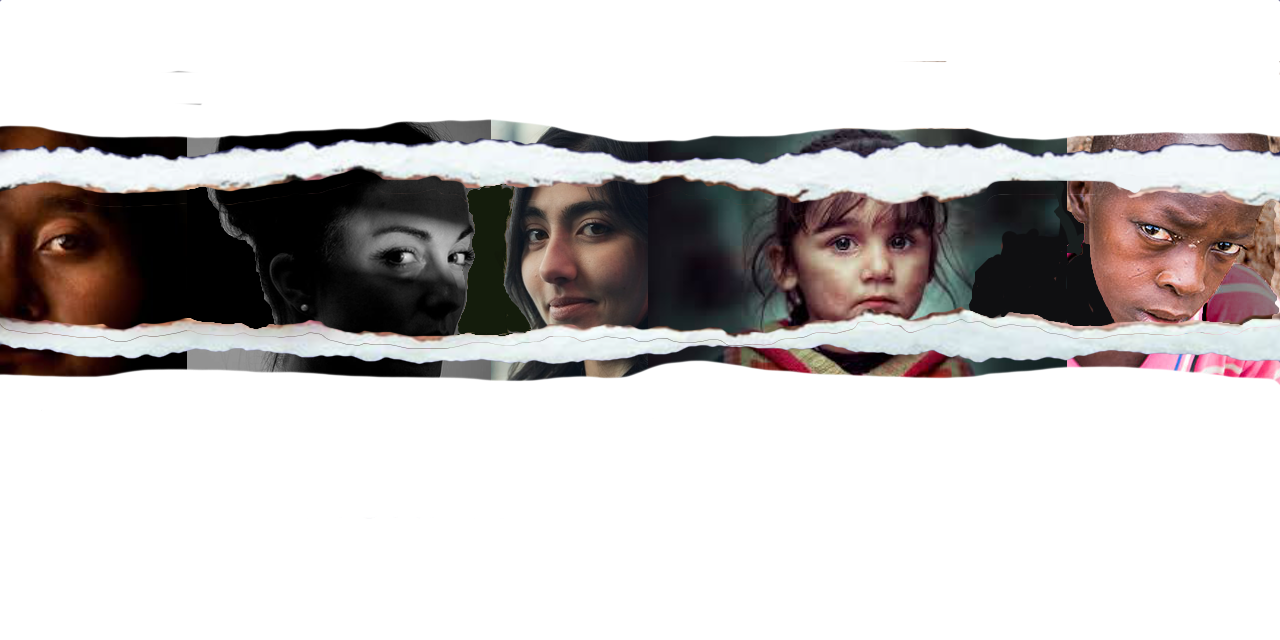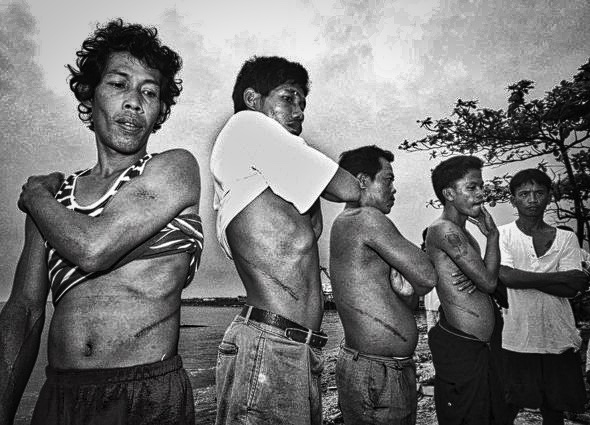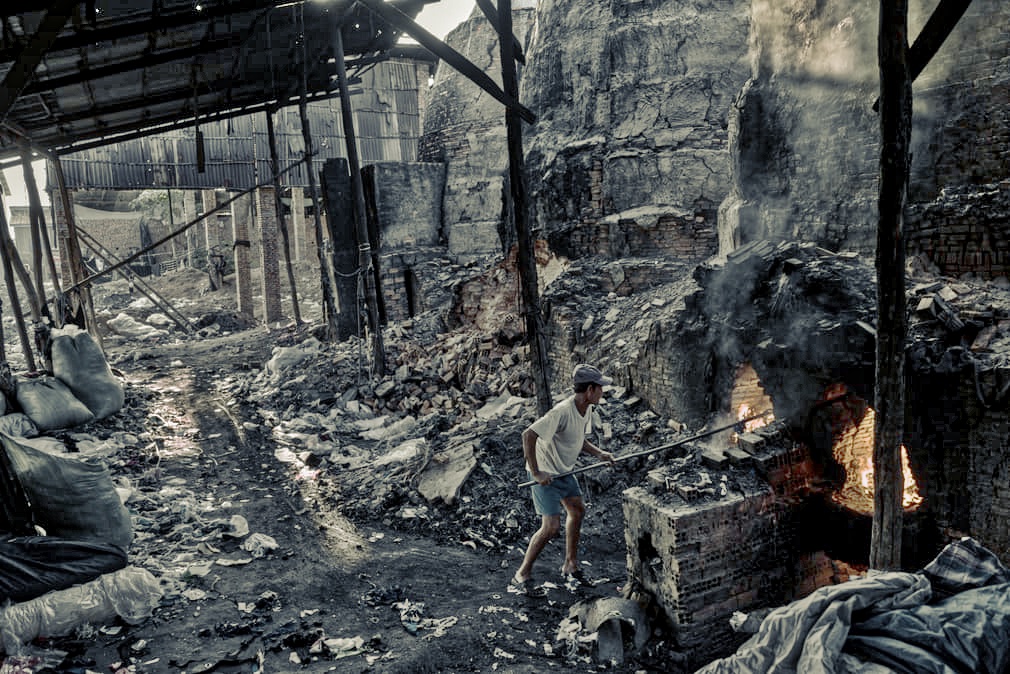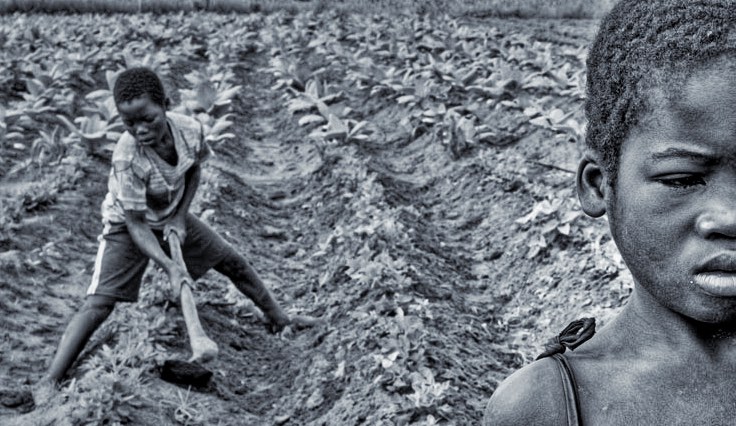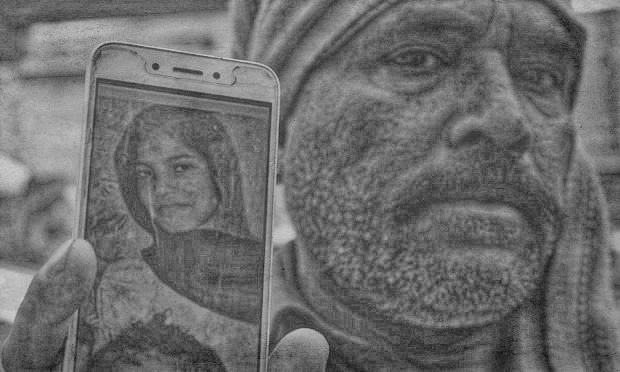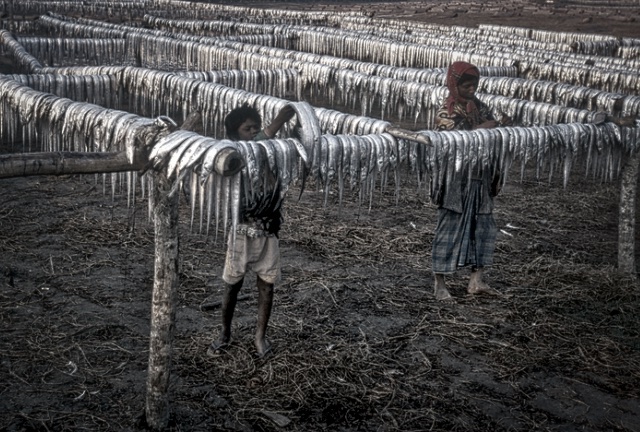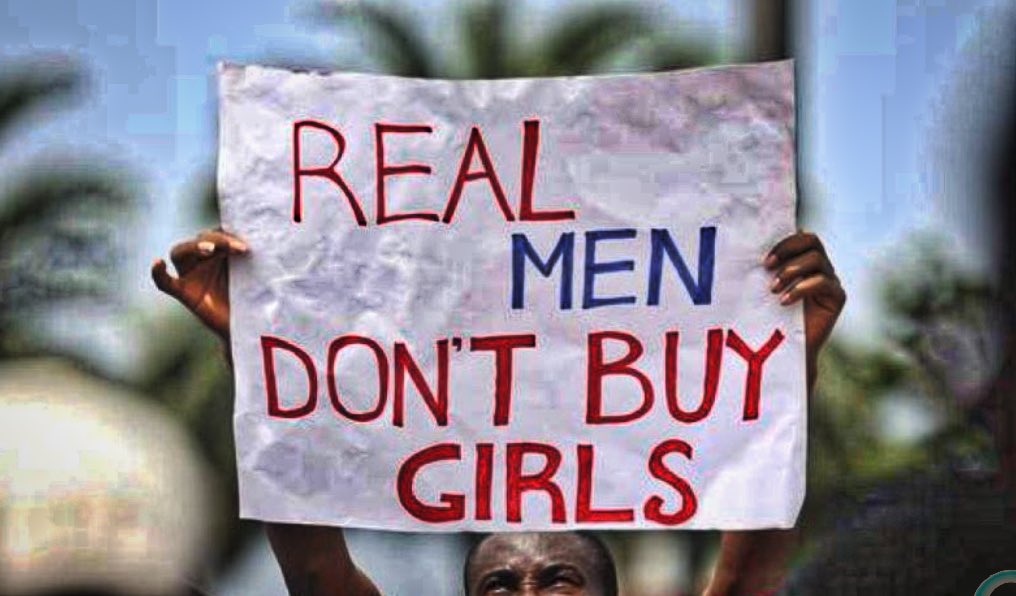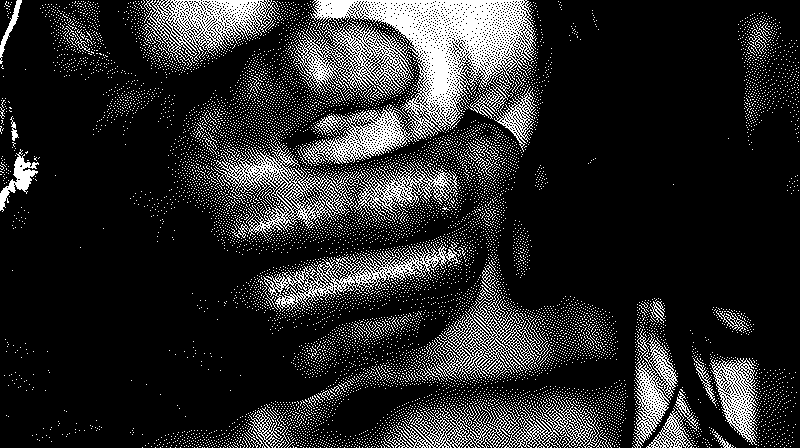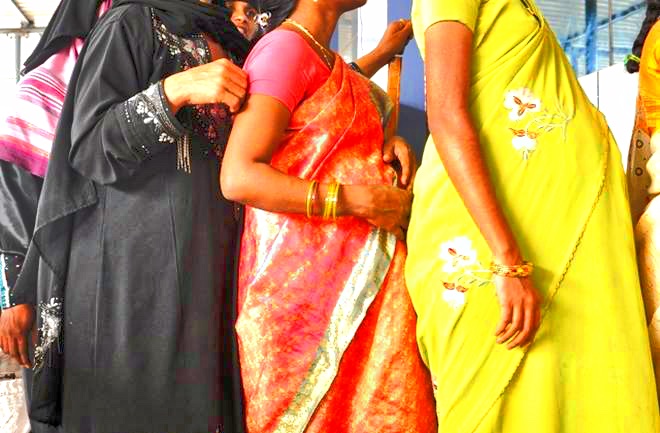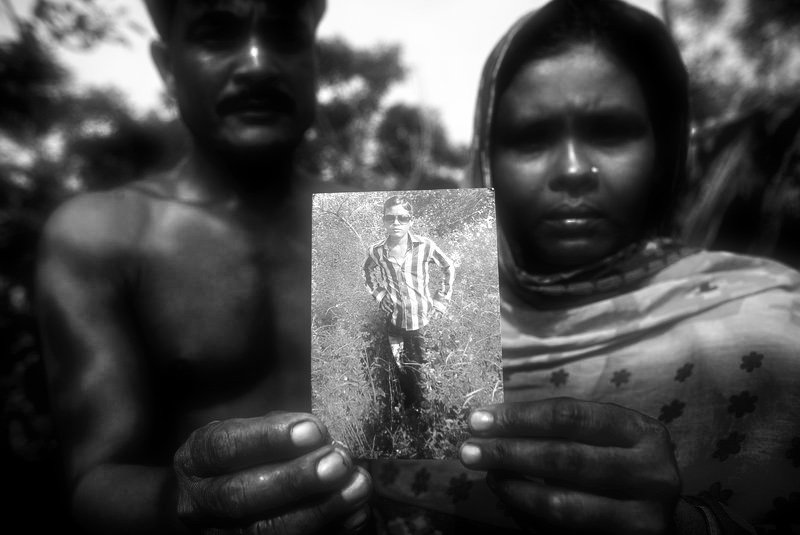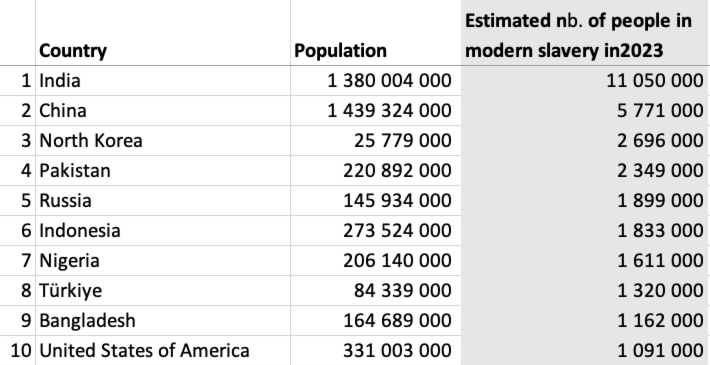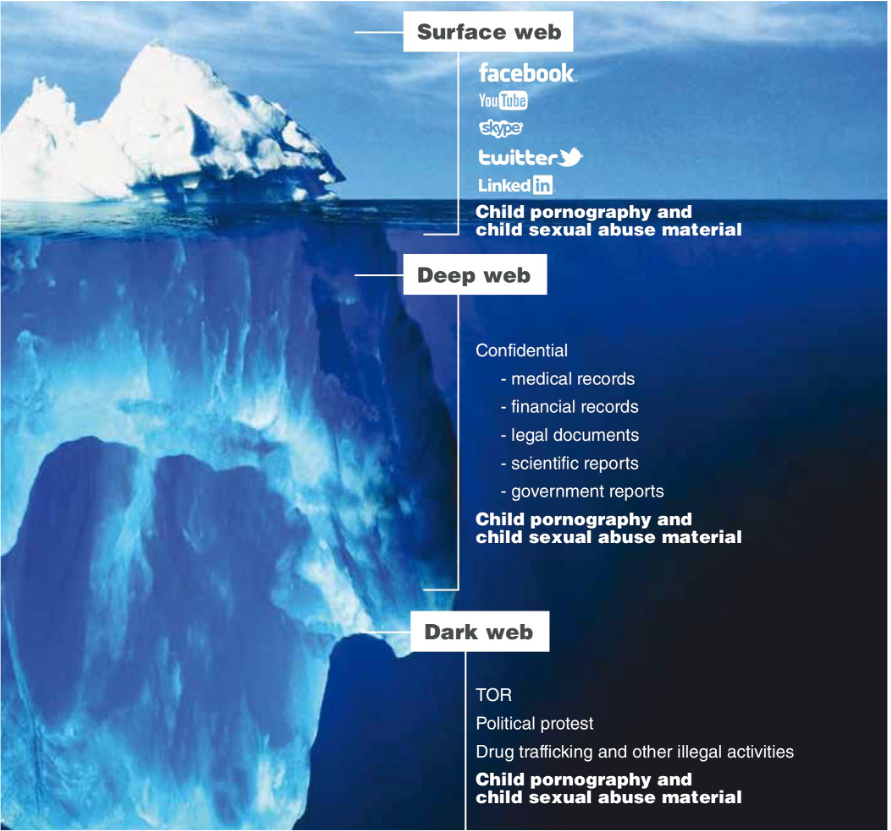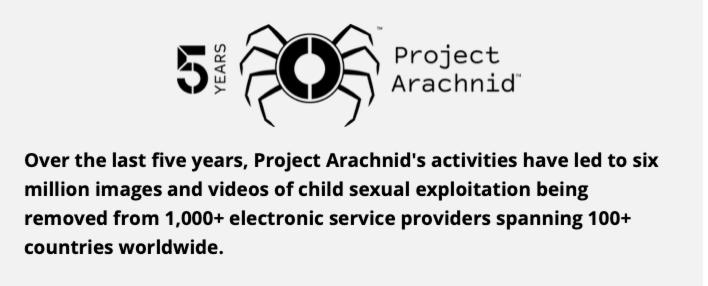


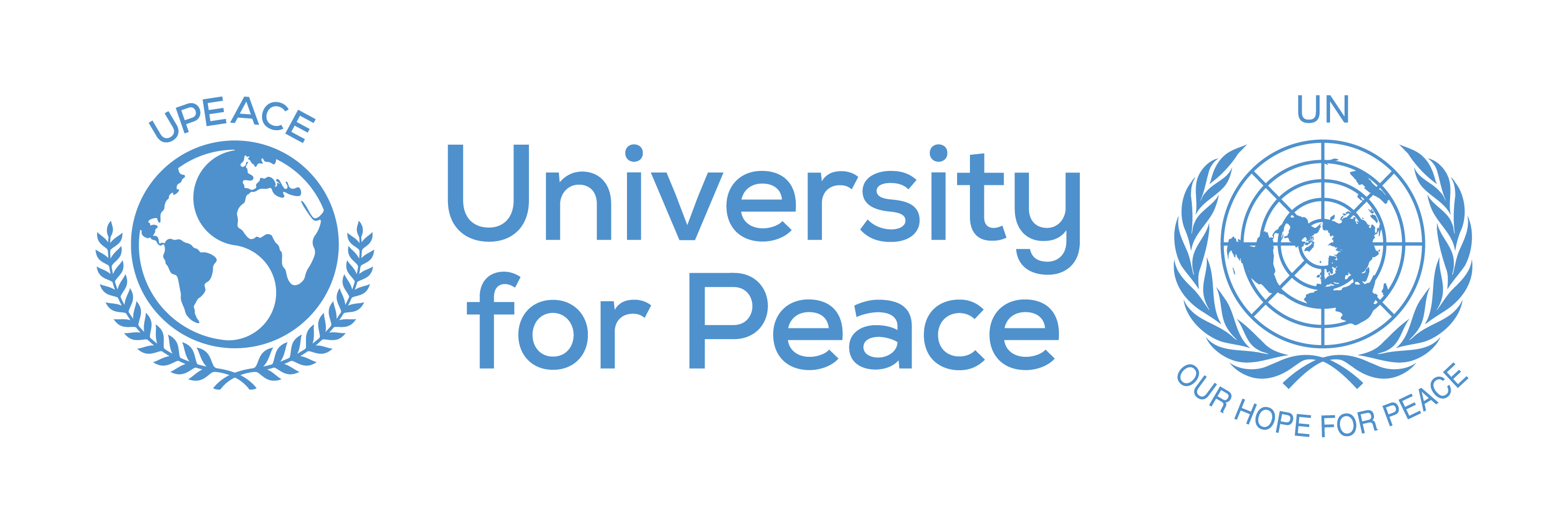
Video introduction by Professor Michel Veuthey, President of CUHD.
Reasons to follow this course
This course has been designed
- to give you access to videos and analyses from leading international anti-trafficking specialists in all key areas (list of experts).
- to share best practices on combating and preventing trafficking in human beings in sharing documents, videos and handbooks on protecting, rehabilitating and reinserting victims, as well as on the psychological impact on helpers (helping the helpers to avoid burnout and to remain effective).
- to make available the important material for reflection and action developed by international organisations (UNODC, OHCHR, IOM, UNHCR, UNICEF), regional organisations (in particular the Council of Europe and the European Union as well as the OSCE), NGOs (in particular ICMC), research and training centres, foundations, the media (ARTE, BBC, etc.), religious communities, in particular the Catholic Church, not forgetting organisations run by survivors of this form of contemporary slavery.
The course is illustrated with a large number of videos, reports, guidelines, manuals and testimonies; it provides you with the most recognized reports and data.
The online course “Understanding, Preventing and Combating Trafficking In Persons – An Online Training Course” is built to meet the expectations of an audience at different levels:
- people who are active and responsible for projects in the field of human trafficking,
- experts looking for a genuine reference library on trafficking, legislation and action plans by country, guides and research on trafficking in human beings from the most important legal and operational actors,
- all who wish to understand the issue of human trafficking.
This course strives to offer professional and practical tools for counteracting trafficking and supporting victims. It does so by promoting three fields of action:
- Prevention of conditions (poverty, inequality, familial abuse) favoring trafficking;
- Assistance to victims and survivors, supporting their physical and psychological rehabilitation and assisting their social reintegration;
- Coordination of activities with already existing support networks.
Navigate freely through the course and quickly reach the topic you are interested in.
Access the best practices: the course can be used as a library to find documents, examples, etc.
It is free of charge in order to make it available to a wide audience.
[mepr-membership-registration-form]
Access to the course materials
Note that you can find the course materials and its appendices by clicking on the material menu at the top of each chapter, lesson, as shown below:
SOURCES: all data below are from studies and reports prepared by www.globalslaveryindex.org. The Global Slavery Index notes about DATA LIMITATIONS – PREVALENCE: While regional estimates of prevalence of modern slavery were presented in the Global Estimates of Modern Slavery, critical gaps in available data were noted. These are particularly problematic in the Arab States where only two national surveys were undertaken, neither of which was a Gulf Cooperation Council (GCC) country, despite the incidence of forced labour reported by various sources in such sectors as domestic work and construction in the GCC. Further, measurement of forced marriage among residents of countries within the region is particularly problematic where there are no surveys. Taken together, these gaps point to a significant underestimate of the extent of modern slavery in this region.
Similarly, it is typically not possible to survey in countries that are experiencing profound and current conflict, such as Syria, Iraq, Yemen, Libya, South Sudan, and parts of Nigeria and Pakistan. Yet it is known that conflict is a significant risk factor – the breakdown of the rule of law, the loss of social supports, and the disruption that occurs with conflict all increase risk of both forced labour and forced marriage. The lack of data from countries experiencing conflict means that modern slavery estimates in regions where conflict countries are situated will understate the problem. Drawing on vulnerability data goes some way towards mitigating the impact of this gap; however, the need for better data in conflict countries remains an urgent research priority. As human trafficking is a hidden phenomenon, statistical data should be treated with a degree of caution, as it is currently impossible to accurately assess the number of victims.
2010 Total slaves estimation in Million
2023 Total slaves estimation in Million
2023 Total slaves estimation in Million in CEE
2023 Total slaves estimation in Million in US
2023 Total slaves estimation in Million in Americas
2023 Total slaves estimation in Million in Asia and the Pacific
2023 Total slaves estimation in Million in Africa
2023 Total slaves estimation in Million in Arab States
See above the Note about DATA LIMITATIONS – PREVALENCE
The desire to remember the slaves of the past should be applauded, without falling into triumphalism and complacency. There is indeed an urgent need to make a concrete commitment to the liberation of modern slaves and to the abolition of all contemporary forms of trafficking.
Slavery is developing today at levels that go beyond what we have known in previous centuries: in 2010, there were an estimated 27 million slaves in the world which is twice the number of all African slaves who were forced to emigrate from Africa to the Americas in the previous centuries. In 2023, the latest estimates produced by international organizations put the number of people deprived of freedoms at over 50 million worldwide, with a continuous growth, despite more than 20 years of development of legal instruments at international level, very little has been put into practice at national level to succeed in reducing this very serious affront to human dignity. The profits of modern slavery in the world, according to the same sources, exceed 150 billion dollars.
Contemporary resurgence
Slavery has not disappeared. Although it is prohibited by a series of national and international legal instruments, slavery is on the rise throughout the world, including in Europe, even if it is often invisible.
According to the Global Slavery Index (www.globalslaveryindex.org/findings), 62% of victims are in 10 countries by order of importance: India, China, North Korea, Pakistan, Russia, Indonesia, Nigeria, Türkiye, Bangladesh, and United States of America. Women and girls account for 71% of slaves, or nearly 36 million people. One in four victims of modern slavery is a child, or about 12 million. In the European Union, estimates are at more than 1,4 million, most of them from Romania, Bulgaria, Slovakia, Nigeria, China and Brazil. Forced labour and sexual exploitation are the most widespread forms of slavery in Europe.
% of slavery victims today in labor slavery
% of slavery victims today in forced marriage slavery
% of slavery victims today in sex slavery
You can find more data per country on the GLOBAL SLAVERY INDEX.
- In 2010, there were an estimated 27 million modern slaves in the world (twice as many as African slaves forced to migrate to the Americas).
- In 2023, the latest estimates are of over 50 million.
- The profits of modern slavery exceed $150 billion.
- In 2023, in Europe and Central Asia,[1]according to the Global Slavery Index[2], the total number of victims of slavery was 6.4 million (1.4 million for the European Union).
- 61% of the victims are in 10 countries by order of importance: India, China, North Korea, Pakistan, Russia, Indonesia, Nigeria, Türkiye, Bangladesh and United States of America. Women and girls represent 71%. One in four victims is a child (12 million). Forced labour (28 million) and sexual exploitation (18 million “IOM” = 63% of forced labour), are the most widespread forms in Europe.
% of slavery victims today are women and girls
% of slavery victims today are men and boys
% of slaves today are children under age 18
- Slavery is often invisible. This causes an inadequate awareness of the authorities and aid structures, public or private.
- One in four victims of contemporary forms of slavery in 2023 was thought to be a child. Women and girls were disproportionately affected, with over 71 per cent of victims being female. Of 28 million people experiencing forced labour, 3.9 million people were subject to State-imposed forced labour, 4.8 million people experienced forced sexual exploitation of adults and/or commercial sexual exploitation of children and 16 million people experienced forced labour exploitation in the private economy. [3]
- The meter association in Italy (https://associazionemeter.org/), a platform for monitoring the activity of pedo criminal sites on the web, reports:
- from 2014 to 2022 a number of 25 million photos and 7 million videos of abused children, mostly on European and US servers;
- from 2020 to 2021, the increasing use of internet by individuals due to the COVID pandemic more than doubled the turnover of pedophilia on internet.
- The Canadian Centre for Child Protection (https://www.protectchildren.ca/), also a platform for monitoring the activity of pedo criminal sites on the web, reports:
- 32 million photos.
- Tens of millions of children are being sexually abused in Europe and the USA today and staged on the web to sell their abuse online. The level of outrages against children is reaching alarming proportions for our societies, and very little is being done to curb their development.
To help you better understand the scale and depth of the problem, we would like to mention below:
The main points of the 2019 report of the UN Special Rapporteur on Contemporary Forms of Slavery – (A/HRC/42/44)
THE CURRENT AND EMERGING FORMS OF SLAVERY REPORT OF THE SPECIAL RAPPORTEUR (MRS. URMILA BHOOLA) TO THE HUMAN RIGHTS COUNCIL (SEPTEMBER 2019) STATES:
The future of work
- Vulnerability to slavery is closely related to labour market regulation and dynamics.
- Informality, including casualization, and other forms of precariousness in employment are risk factors for vulnerability to slavery.
- If technological and social changes in the world of work are not human-centred and trends towards decent work deficits are not tackled, precariousness in the labour markets could increase, and slavery risks will likely rise with it. Lower-skilled jobs will be susceptible to disruption by automation, resulting in displaced workers competing with other low-skill workers for a smaller number of jobs for lower wages.
Demographic trends and migration
- Limited access to jobs is also a main driver of migration, itself a major source of vulnerability to slavery.
- Migration will likely continue to increase due to push factors such as conflict, income inequality, lack of economic opportunity and climate change, and pull factors such as demand for labour.
- Economic shifts will also impact the geography of slavery. Asia, already burdened with the highest absolute prevalence of slavery according to the Global Estimates, is undergoing an economic boom that may heighten the risk of slavery in certain economic sectors, notably construction and infrastructure development.
Environmental change
- The geography of contemporary forms of slavery will also be heavily impacted by climate and environmental change.
- By 2050, approximately 5 billion people may live in areas where the climate “will exceed historical bounds of variability”, and 143 million people in sub-Saharan Africa, South Asia and Latin America will face internal migration due to climate change, which will increase vulnerability for these populations.
- There is also evidence of covariance between the likelihood of contemporary forms of slavery and the likelihood of violations of environmental laws and standards, whether in the fishing industry, in forestry or in agriculture.
Other emerging trends
- New technologies are leading to new forms of exploitation, such as forcing children to participate in online sexual exploitation.
- There are also disturbing signs suggesting that a resurgence of enslavement in armed conflict contexts, not only as a method of recruitment but increasingly also as an open tactic of ideological subjugation and conflict financing.
- Conflict-induced displacement is at historic highs, further limiting people’s access to decent work, disrupting social networks and increasing their vulnerability to debt bondage, forced labour, commercial sexual exploitation, child labour and servile forms of marriage as a means of survival and coping.
-
Finally, there will be a heightened risk of forced and servile marriage and sexual slavery in societies where there is a persistent gender imbalance, a phenomenon often resulting from the practice of sex-selective abortion.
Remedies
There is a general need for awareness, information and training. A comprehensive effort at national, regional and international levels is needed to address this massive global denial of fundamental human rights.
In everyday reality, the victims of slavery living alongside us need reception, protection and reintegration structures. The victims are invisible, unlike other periods in the history of slavery. This real invisibility contributes to an inadequate awareness of our authorities and our aid structures, whether public or private.
The most urgent and necessary activity is to promote knowledge of the facts and development processes of modern slavery. Governments and civil society must also take measures to help and rehabilitate the victims of modern slavery. Finally, prevention through education and other economic, social and political measures that restore the rule of law, ensure the protection and rehabilitation of survivors and the prosecution of criminals are needed.
END OF QUOTES
—————————————————————————————————-
Structure of the course
The approach taken in this course could be characterized as “holistic”, as it seeks to consider trafficking in its entirety, taking the complex implications of trafficking into account. This approach analyzes relevant economic factors and migration policies, considering the profound evolution of gender roles and relationships. From this perspective, exploitation, sexual or otherwise, is at the center of trafficking.
This course strives to offer the reader a professional and practical instrument for counteracting trafficking and supporting victims. It does so by promoting three fields of action:
- Prevention of conditions favoring trafficking (poverty, inequality, familial abuse);
- Assistance to victims, supporting their physical and psychological rehabilitation and assisting them in social reintegration;
- Coordination of activities with already existing support networks.
The division of themes and the consistent arrangement of each chapter makes it possible for the student to consult specific sections according to interest or need, as well as level of knowledge.
In English:
- #EndSlavery.va: HOLY SEE WEBSITE ON HUMAN TRAFFICKING
- GLOBAL SLAVERY INDEX.ORG
- TED SHOW: Kevin Bales explains the business of modern slavery
- U.S. Department of State, MEET THE HEROES OF FIGHTING AGAINST TRAFFICKING IN PERSONS : Find highly engages personalities worldwide. Explore all the Heroes! Use the filters below to check out where and how they work, or view by class to make connections between Heroes working all over the globe.
- WALK FREE FOUNDATION
Reports of the UN Special Rapporteurs:
- Contemporary forms of slavery affecting persons belonging to ethnic, religious and linguistic minority communities - Report of the Special Rapporteur on contemporary forms of slavery, including its causes and consequences A/HRC/51/26 - 19 July 2022
- Contemporary forms of slavery in the informal economy - Report of the Special Rapporteur on contemporary forms of slavery, including its causes and consequences A/77/163 - 14 July 2022
- Addressing the vulnerabilities of children to sale and sexual exploitation in the framework of the Sustainable Development Goals - Report of the Special Rapporteur on the sale and sexual exploitation of children, including child prostitution, child pornography and any other child sexual abuse material A/77/140 - 12 July 2022
- A practical approach to addressing the sale and sexual exploitation of children - Report of the Special Rapporteur on the sale and sexual exploitation of children, including child prostitution, child pornography and any other child sexual abuse material A/HRC/49/51 - 10 January 2022
- Role of organized criminal groups with regard to contemporary forms of slavery - Report of the Special Rapporteur on contemporary forms of slavery A/76/170 - 24 January 2022
- Trafficking in persons in the agriculture sector: human rights due diligence and sustainable development - Report of the Special Rapporteur on trafficking in persons, especially women and children - A/HRC/50/33 - 25 April 2022
- Impact of coronavirus disease on different manifestations of sale and sexual exploitation of children - Report of the Special Rapporteur on the sale and sexual exploitation of children, including child prostitution, child pornography and any other child sexual abuse material A/HRC/46/31 - 22 January 2021
- Implementation of the non-sanction principle - Report Of The Special Rapporteur On Trafficking In Persons, Especially Women And Children A/HRC/47/34 - 17 May 2021
- Role of organized criminal groups with regard to contemporary forms of slavery - Report of the Special Rapporteur on contemporary forms of slavery, including its causes and consequences A/76/170 - 16 July 2021
- Gender dimension of the sexual exploitation of children and the importance of integrating a child-centred and gender-inclusive approach to combating and eradicating it - Report of the Special Rapporteur on the sale and sexual exploitation of children, including child prostitution, child pornography and any other child sexual abuse material A/76/144 - 19 July 2021
- Nexus between displacement and contemporary forms of slavery - Report of the Special Rapporteur on contemporary forms of slavery, including its causes and consequences A/HRC/48/52 - 26 July 2021
- Intersections between trafficking in persons by proscribed groups and terrorism - Report of the Special Rapporteur on trafficking in persons, especially women and children A/76/263 - 3 August 2021
- Sale And Sexual Exploitation Of Children – Report of the Special Rapporteur on the Sale and Sexual Exploitation of Children, Including Child Prostitution, Child Pornography and Other Child Sexual Abuse Material A/HRC/43/40 – 21 January 2020
- Contemporary forms of slavery, including its causes and consequences - Report Of The Special Rapporteur On Contemporary Forms Of Slavery, Including Its Causes And Consequences A/75/166 - 16 July 2020
- 20 Years After: Implementing and Going Beyond the Palermo Protocol towards a human rights centred approach - Report of the Special Rapporteur on trafficking in persons, especially women and children A/75/169 - 17 July 2020
- Impact of the coronavirus disease pandemic on contemporary forms of slavery and slavery-like practices - Report of the Special Rapporteur on contemporary forms of slavery, including its causes and consequences A/HRC/45/8 - 4 August 2020
- Access to remedy for victims of trafficking for abuses committed by businesses and their suppliers - Report of the Special Rapporteur on trafficking in persons, especially women and children A/74/189 - 18 July 2019
- Current and emerging forms of slavery - Report of the Special Rapporteur on contemporary forms of slavery, including its causes and consequences* A/HRC/42/44 - 25 July 2019
En Français:
Rapports des Rapporteurs Spéciaux de l'ONU:
- Une approche pratique pour lutter contre la vente et l’exploitation sexuelle d’enfants - Rapport de la Rapporteuse spéciale sur la vente et l’exploitation sexuelle d’enfants, y compris la prostitution des enfants et la pornographie mettant en scène des enfants et autres contenus montrant des violences sexuelles sur enfant - A/HRC/49/51 - 10 janvier 2022
- Effets de la maladie à coronavirus 2019 sur les différentes formes de vente et d’exploitation sexuelle d’enfants - Rapport de la Rapporteuse spéciale sur la vente et l’exploitation sexuelle d’enfants, y compris la prostitution des enfants et la pornographie mettant en scène des enfants et autres contenus montrant des violences sexuelles sur enfant A/HRC/46/31 - 22 janvier 2021
- Rôle des groupes criminels organisés dans les formes contemporaines d'esclavage - Rapport du Rapporteur spécial sur les formes contemporaines de l'esclavage A/76/170 - 24 janvier 2022
- Traite des personnes dans le secteur agricole: la diligence raisonnable en matière de droits de l'homme et de développement durable - Rapport de la Rapporteuse spéciale sur la traite des êtres humains, en particulier les femmes et les enfants A/HRC/50/33 - 25 avril 2022
- Application du principe de non-sanction - Rapport de la Rapporteuse spéciale sur la traite des êtres humains, en particulier les femmes et les enfants A/HRC/47/34 - 17 mai 2021
- Rôle des groupes criminels organisés dans les formes contemporaines d’esclavage - Rapport du Rapporteur spécial sur les formes contemporaines d’esclavage, y compris leurs causes et leurs conséquences A/76/170 - 16 juillet 2021
- La dimension de genre de l’exploitation sexuelle d’enfants et l’importance d’adopter une approche centrée sur l’enfant et tenant compte de la dimension de genre pour combattre cette exploitation et y mettre fin - Rapport de la Rapporteuse spéciale sur la vente et l’exploitation sexuelle d’enfants, y compris la prostitution des enfants et la pornographie mettant en scène des enfants et autres contenus montrant des violences sexuelles sur enfant A/76/144 - 19 juillet 2021
- Lien entre déplacements et formes contemporaines d’esclavage - Rapport du Rapporteur spécial sur les formes contemporaines d’esclavage, y compris leurs causes et leurs conséquences A/HRC/48/52 - 26 juillet 2021
- Intersections entre la traite des personnes par des groupes proscrits et le terrorisme - Rapport de la Rapporteuse spéciale sur la traite des êtres humains, en particulier les femmes et les enfants A/76/263 - 3 août 2021
- Vente et exploitation sexuelle d’enfants - Rapport de la Rapporteuse spéciale sur la vente et l’exploitation sexuelle d’enfants, y compris la prostitution des enfants et la pornographie mettant en scène des enfants et autres contenus montrant des violences sexuelles sur enfant A/HRC/43/40 - 21 janvier 2020
- Les formes contemporaines d’esclavage,
y compris leurs causes et leurs conséquences - Rapport du Rapporteur spécial sur les formes contemporaines d’esclavage, y compris leurs causes et leurs conséquences A/75/166 - 16 juillet 2020 - Traite des êtres humains, en particulier les femmes et les enfants - Rapport de la Rapporteuse spéciale sur la traite des êtres humains, en particulier les femmes et les enfants A/75/169 - 17 juillet 2020
- Impact de la pandémie de maladie à coronavirus sur les formes contemporaines d’esclavage et les pratiques analogues à l’esclavage - Rapport de la Rapporteuse spéciale sur les formes contemporaines d’esclavage, y compris leurs causes et leurs conséquences A/HRC/45/8 - 4 août 2020
- Traite des êtres humains, en particulier les femmes et les enfants - Rapport de la Rapporteuse spéciale sur la traite des êtres humains, en particulier les femmes et les enfants A/74/189 - 18 juillet 2019
- Formes actuelles et émergentes d’esclavage - Rapport de la Rapporteuse spéciale sur les formes contemporaines
d’esclavage, y compris leurs causes et leurs conséquences A/HRC/42/44 - 25 juillet 2019
You must log in and have started this course to submit a review.


